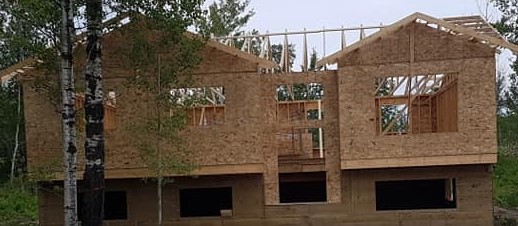By Julia Peterson, Local Journalism Initiative Reporter
A new report from Statistics Canada has found many Indigenous people in Canada struggling to find safe, quality housing.
In Saskatchewan, researchers, advocates and community members know how serious the problem is.
“I wish we had more housing,” said Angela Caplette, who works in tenant relations with the Meadow Lake Native Urban Housing Corporation. “We need … another seniors’ complex, and more single dwellings.
“It’s needed, really needed.”
The organization manages 145 affordable housing units in Meadow Lake, Sask., a city of just over 5,000 people located nearly 300 kilometres northwest of Saskatoon. Caplette said she and her coworkers focus on supporting Métis and Indigenous tenants, and often work one-on-one with families to help them navigate the ever-more-complex system of benefits, programs and services that can help keep them in their homes.
“The government made all these cutbacks in all these community programs, as well as social services,” she said. “And I’m thinking — oh my God, how can they do this, when it’s so needed?
“It’s too bad the government can’t come spend a week here and see what we deal with.”
When people run out of good options, Caplette sees the consequences.
“They end up going to these slumlords, as we’d call them,” she said. “We’ve got lots of those here in Meadow Lake that don’t take care of the homes. They’re not really even livable.”
Last year’s census found Canada’s Indigenous population is still growing, accounting for about five per cent of the total population, and is hit particularly hard by shortages, failures and inadequacies in the housing system.
The Statistics Canada report found that, in 2021, more than 16 per cent of Indigenous people were living in dwellings that need major repairs, compared to just under six per cent of non-Indigenous people.
Indigenous people were also about seven per cent more likely to be living in crowded housing.
On reserves, the situation is even more serious. The census found that more than a third of First Nations people with registered or treaty status on reserves are living in houses that need major repairs.
University of Saskatchewan College of Medicine professor Shelley Kirychuk is part of a team studying First Nations housing needs.
She said this issue has not been researched enough — particularly on the prairies, and even more so in Saskatchewan — but early results show that “the housing does not meet the needs.”
In August, the research team published a paper about the housing conditions on two rural First Nations in Saskatchewan.
It found that nearly 70 per cent of the houses surveyed were crowded, and almost half were in need of major repairs. That’s much higher than the national figures reported by Statistics Canada.
Furthermore, more than half the houses surveyed in these two communities had problems with damp or mold.
“These two rural Saskatchewan First Nation communities more frequently had housing conditions that were not suitable, and the conditions were not as good as that indicated at the national level for both Indigenous and non-Indigenous people in Canada,” the team wrote in their analysis.
Earlier this year, the federal government announced a $4.3 billion commitment to help improve Indigenous housing, as well as other reconciliation efforts.
At the time, the Federation of Sovereign Indigenous Nations said much more funding — in the range of $15 billion — is needed to meet essential housing needs.
